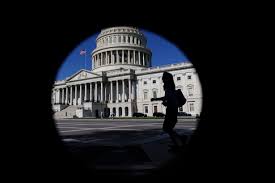Something is out of balance in Washington. Corporations now spend about $2.6 billion a year on reported lobbying expenditures—more than the $2 billion we spend to fund the House ($1.18 billion) and Senate ($860 million). It’s a gap that has been widening since corporate lobbying began to regularly exceed the combined House-Senate budget in the early 2000s.
Today, the biggest companies have upwards of 100 lobbyists representing them, allowing them to be everywhere, all the time. For every dollar spent on lobbying by labor unions and public-interest groups together, large corporations and their associations now spend $34. Of the 100 organizations that spend the most on lobbying, 95 consistently represent business.
One has to go back to the Gilded Age to find business in such a dominant political position in American politics. While it is true that even in the more pluralist1950s and 1960s, political representation tilted towards the well-off, lobbying was almost balanced by today’s standards. Labor unions were much more important, and the public-interest groups of the 1960s were much more significant actors. And very few companies had their own Washington lobbyists prior to the 1970s. To the extent that businesses did lobby in the 1950s and 1960s (typically through associations), they were clumsy and ineffective. “When we look at the typical lobby,” concluded three leading political scientists in their 1963 study, American Business and Public Policy, “we find its opportunities to maneuver are sharply limited, its staff mediocre, and its typical problem not the influencing of Congressional votes but finding the clients and contributors to enable it to survive at all.”

